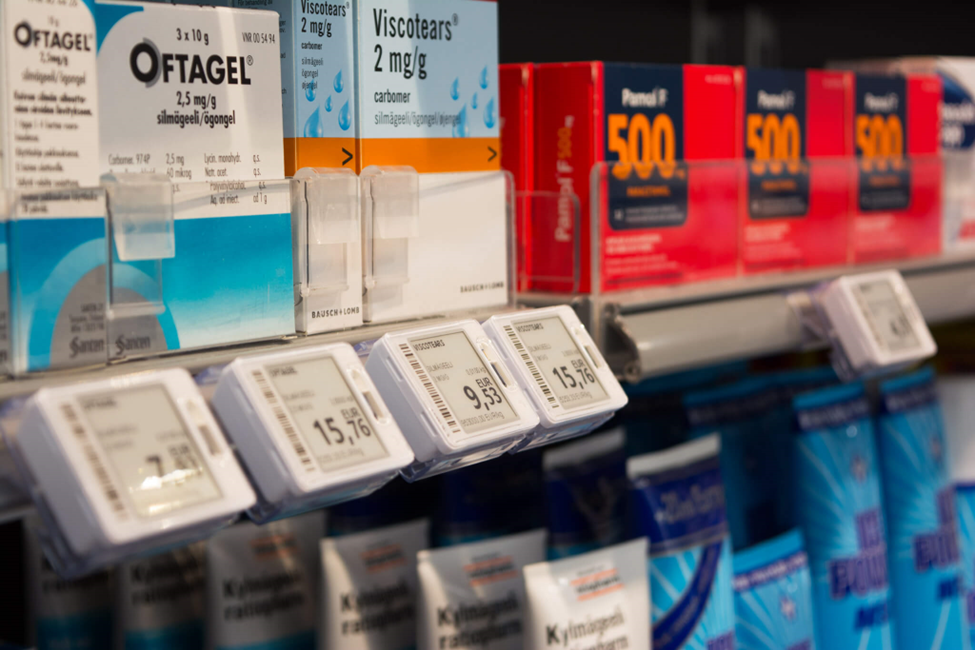The new Inker series has already dived into some different ePaper applications, including healthcare and hospital environments. In today’s blog, I explore the different ways and types of ePaper that are used in stores as price tags or advertisements.

Credit: E Ink
The most common kind of retail application of ePaper is electronic shelf labels (ESLs). You probably have them at local department or grocery stores and don’t even realize that they aren’t regular paper price tags. ESLs are any type of ePaper display that is smaller than three inches, and there are different types of them:
- Segmented ESL Tags: E Ink technology can be used to build simple Segmented ESL Tags allowing Retailers to dynamically change the pricing of their products.
- Monochromatic ESL Tags: Displays not only the price; additional information can be added such as images, customer reviews, and inventory levels.
- Full Color ESL Tags: Many Retailers use color as part of their brand image or to highlight promotional pricing. E Ink Spectra features an enhanced color spectrum and an advanced color imaging algorithm to provide full color to improve marketing and advertising performance.
There are many benefits to using ESLs, like the fact that they have up to a five-year battery life. They also gave great optical performance, even under store lighting. This means that tags on top or bottom shelves are easily readable by customers. These ePaper displays are perfect for grocery stores, electrical retailers, pharmacies, clothing retailers, and department stores.

Credit: E Ink
Digital Out Of Home (DOOH) signage is another important application of ePaper displays. It can be used anywhere from inside stores to bus stops to billboards. There are many different options when it comes to DOOH signage: what size you want, black and white or color, and what ppi and resolution is right for you. The options are endless and can fit exactly what you need. These displays can be battery or solar powered, they consume zero power when not updating, and do not contribute to light pollution, helping organizations reach their sustainability goals. On a larger scale, ePaper signage can reduce CO2 emissions by about 4 million tons when compared to printed paper posters.
Point of Purchase (POP) signs are a good in between option, being a smaller formfactor but bigger than ESLs. Text and picture content is managed and updated electronically without the need for manual replacement, leading to low installation and maintenance costs. This choice of ePaper signage has benefits such as a print like experience, no glare, high contrast, and remote content management.
In conclusion, ePaper technology is revolutionizing the retail industry with its versatile applications and numerous benefits. From electronic shelf labels (ESLs) that enhance pricing flexibility and customer experience, to Digital Out Of Home (DOOH) signage that supports sustainability goals, ePaper displays are proving to be a game-changer. Their low power consumption, high readability, and remote content management make them an ideal choice for various retail environments, including grocery stores, pharmacies, and department stores.
As the demand for more efficient and sustainable technology grows, ePaper will continue to play a crucial role in transforming how retailers communicate with their customers. Learn more about the different applications of ePaper in retail environments here.


Leave Comment